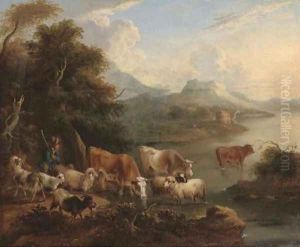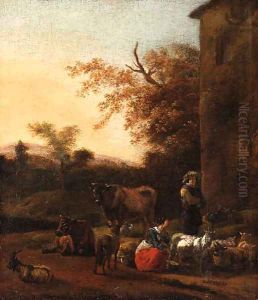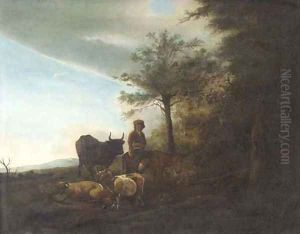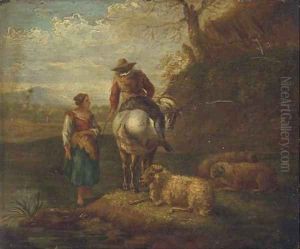Dirck Van Bergen Paintings
Dirck van Bergen was a Dutch Golden Age landscape painter, born in Haarlem in 1645. His work primarily focused on summer and winter scenes, often populated with cattle and figures. He was influenced by the pastoral scenes of 17th-century Dutch landscape painting, following in the tradition of artists like Pieter van Laer and Nicolaes Pieterszoon Berchem, who were known for their Italianate landscapes and animal paintings.
Dirck van Bergen's landscapes are characterized by their peaceful rural settings, with a warm palette and a skillful rendering of light and shadow. His paintings often feature cows, sheep, and goats, which he rendered with a delicate touch and attention to detail, indicating a deep familiarity with these subjects. His figures, usually peasants or shepherds, are typically depicted in harmony with the natural surroundings, reinforcing the idyllic quality of his scenes.
Van Bergen spent most of his life in Haarlem, where he was a member of the Haarlem Guild of St. Luke. Despite the popularity of Italianate landscapes at the time, van Bergen rarely ventured beyond his native Dutch landscapes, which may account for his less widespread fame compared to contemporaries who incorporated more exotic locales into their work. Unfortunately, little is known about his personal life or training, as is the case with many artists of the period.
He passed away in Haarlem in 1690, leaving behind a small but significant body of work that contributes to our understanding of Dutch landscape painting in the 17th century. While Dirck van Bergen may not be as well-known as some of his contemporaries, his work remains appreciated by art historians and collectors for its bucolic charm and technical proficiency.



